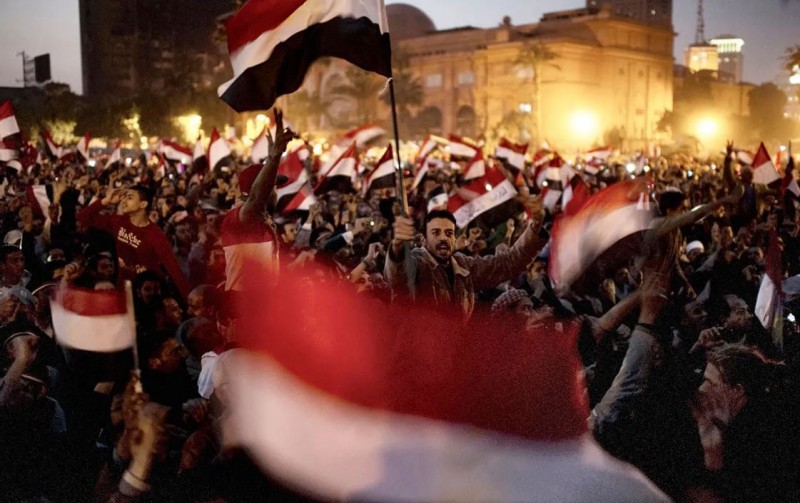
Introduction
The Arab Spring uprisings, which began in 2010, brought about a wave of political changes across several countries in the Middle East and North Africa (MENA) region. These unprecedented events marked a turning point in the history of the region, as millions of people took to the streets demanding political reforms, social justice, and an end to authoritarian rule. This article delves into the causes, key events, and lasting impacts of the Arab Spring uprisings.
Causes of the Arab Spring
The Arab Spring uprisings were fueled by a combination of factors that had been simmering beneath the surface for years. High levels of unemployment, widespread corruption, economic inequality, political repression, and a lack of social freedoms created a boiling point for the people of the MENA region. Furthermore, the growing influence of social media and increased connectivity played a significant role in mobilizing and organizing the masses.
Tunisia: The Spark that Ignited the Uprisings
The Arab Spring began in Tunisia in December 2010 when a young street vendor named Mohamed Bouazizi set himself on fire to protest against police harassment and economic hardships. His desperate act of self-immolation triggered widespread protests and a series of events that led to the overthrow of President Zine El Abidine Ben Ali. The success of the Tunisian revolution inspired and emboldened people in other countries to rise up against their oppressive regimes.
Egypt: Overthrowing Mubarak and the Rise of Tahrir Square
Following the Tunisian revolution, Egypt became the focal point of the Arab Spring. In January 2011, mass protests erupted across the country, demanding the ousting of President Hosni Mubarak, who had been in power for nearly three decades. The iconic Tahrir Square in Cairo became the symbol of the revolution, as millions of Egyptians rallied together for political change. Eventually, Mubarak was forced to step down, marking a significant victory for the people and inspiring similar movements in neighboring countries.
Libya: From Uprising to Civil War
Libya witnessed one of the most violent and chaotic episodes of the Arab Spring. What initially began as peaceful protests against the regime of Muammar Gaddafi quickly escalated into a full-blown civil war. International intervention, led by NATO, played a crucial role in supporting the rebels, eventually resulting in Gaddafi's capture and death. However, Libya descended into a power struggle and political fragmentation in the aftermath, leaving the country in a state of ongoing instability.
Syria: The Brutal Repression and Ongoing Conflict
The Syrian uprising, which started in March 2011, was met with brutal repression by President Bashar al-Assad's regime. The peaceful protests demanding political reforms soon turned into a protracted and devastating civil war. The conflict in Syria has not only caused immense human suffering and displacement but has also drawn in regional and international powers, leading to a complex geopolitical situation that persists to this day.
Yemen: A Struggle for Power and Stability
Yemen, already grappling with economic challenges and internal conflicts, experienced a series of mass protests calling for the removal of President Ali Abdullah Saleh. The prolonged unrest eventually led to a power transition, but Yemen continues to face significant political and humanitarian crises, exacerbated by the ongoing conflict between the government and Houthi rebels.
Bahrain: The Protests and Government Crackdown
In Bahrain, the Arab Spring protests were met with a heavy-handed response from the government. The predominantly Shia population demanded greater political representation and an end to discrimination by the ruling Sunni monarchy. The protests were met with a crackdown, which further intensified sectarian tensions in the country.
Other Countries Affected by the Arab Spring
The Arab Spring uprisings had a ripple effect across other countries in the MENA region. Protests and demonstrations erupted in countries like Algeria, Jordan, Morocco, and Sudan, with varying degrees of success. While some regimes managed to weather the storm, the widespread calls for change echoed throughout the region, leaving a lasting impact on the political landscape.
Impacts of the Arab Spring
The Arab Spring brought about significant changes and had far-reaching consequences across various domains.
Political Transformations and Reforms
The uprisings led to the overthrow of long-standing dictators and authoritarian rulers, opening up opportunities for democratic reforms and greater political participation. New governments were formed, and in some cases, elections were held, albeit with mixed results. However, the transition to stable democracies proved challenging, as political instability and power struggles persisted.
Social and Economic Consequences
The Arab Spring also exposed deep-rooted social and economic issues in the region. Youth unemployment, income inequality, and lack of opportunities were among the grievances that fueled the uprisings. While some progress has been made in addressing these concerns, much work remains to be done to achieve sustainable development and inclusive growth.
Regional and International Ramifications
The Arab Spring had significant implications beyond the MENA region. It sparked debates and discussions on democracy, human rights, and political reform globally. The role of social media in mobilizing mass movements and the responsibilities of the international community in supporting democratic transitions became key areas of focus.
Challenges and Lessons Learned
The aftermath of the Arab Spring has been marked by numerous challenges and setbacks. The rise of extremist groups, the resurgence of authoritarianism in some countries, and ongoing conflicts have posed significant hurdles to stability and progress. The lessons learned from the uprisings emphasize the importance of inclusive governance, economic opportunities, and addressing social grievances to prevent future unrest.
Conclusion
The Arab Spring uprisings reshaped the political, social, and economic landscapes of the Middle East and North Africa. What began as a wave of popular protests against authoritarian rule turned into a complex and multifaceted series of events with long-lasting repercussions. While the path to democratic governance and stability remains challenging, the aspirations and demands of the people for freedom, justice, and dignity continue to shape the region's future.
Manipur Violence: Tribal Leader Forum Regrets Kuki Zo Conflict